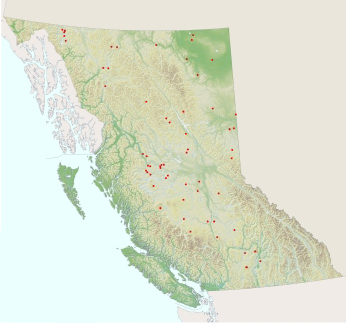Medium-sized dragonflies most often seen around lakes, boggy streams and peatlands in the mountains or in the north. Of 16 species in our region, 13 have Northern or Beringian ranges. The eyes, often brilliant green, meet broadly on top of the head. The shape of the anal loop in the hindwing is distinctive. Adults seldom perch during feeding and males frequently hover when patrolling for mates; when resting, they normally hang vertically or obliquely from vegetation. In flight, a male frequently arches its abdomen, which is often narrower at the base and tip. Larvae are usually squat and rather hairy; they sprawl in the mud and detritus in the bottom of the waters where they live.
|
Uncommon in most of its B.C. range, especially in the south, where it lives at higher elevations. Breeds in deep, sedge-bordered lakes and ponds and in peatland ponds. The males patrol the outer edge of the emergent vegetation. In the northern Yukon, in places where Hudsonian and Treeline emeralds fly together, these species often interbreed.
|
|
